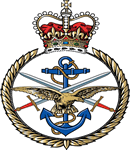Commemorated: | |||
| 1. Memorial: | Scarborough (Manor Road) Cemetery | L. 8. 18. | |
Awards & Titles: | |||
Early Life :
This naval officer and freemason has been brought to our attention by F. Fox of the Friends of Dean Road and Manor Road Cemetery, to whom this project is grateful and this research is credited.Philip William Snewin was the son of Philip Snewin, a carpenter by trade and Mary Snewin nee Venn who married on 18th December 1864. Philip William was born at Lyminster, Sussex on the 30th October 1868.
Family :
Philip William married Charlotte Fanny Seagrave in 1893 and they had four children, Dorothy Beatrice Charlotte born 1895, Elsie Lilian born 1898, Ethel born 1903 and Jack born 1905. His wife, Charlotte Fanny died on 11th February 1919 and is buried with her husband in Manor Road cemetery.Service Life:
Campaigns:
| Unit / Ship / Est.: H.M. Coastguard |
| Action : Irish War of Independence |
Detail :
Chief Officer Snewin’s service record shows that he was stationed in Scarborough from 25th January 1917 to 30th April 1919 and a report in the Irish Times states that he was in charge of the Wireless Station. He then transferred to the Coast Guard Station at Ballycrovane, Co. Cork.
Philip was killed on 25th July 1920 in an Irish Republican Army (IRA)/Sinn Fein attack on the station, part of a series of ambushes and raids to seek arms and ammunition for the ongoing Irish Revolution.
The University College Cork, The Irish Revolution Project, write:
“About twenty Volunteers from the Ardgroom, Ballycrovane, Eyeries, Inches and Kilcatherine attacked the Ballycrovane Coastguard Station on Sunday morning, 25 July 1920, and encountered stiff resistance from the dozen or so “marines” posted there.”
“A subsequent newspaper report clearly indicated that two coastguards–Philip Snewin and Charles Brown–had been killed at Ballycrovane; their bodies were brought to Hawlbowline and then placed aboard a Great Southern and Western Railway train en route to England.”
“From his own detailed later account of the Ballycrovane attack it appears that Volunteer Liam O’Dwyer of Ardgroom, later O/C of the Castletownbere Battalion, fired the shots that killed Snewin and Brown.”
Philip’s body was brought back to Scarborough for burial on Saturday 31st August and because this was unexpected there was no hearse available and the body was taken from the railway station on a coal cart!
News of his death and funeral were reported in the Scarborough Mercury and he was described as popular with a wide circle of friends and well known in local Masonic circles. It was reported that his two younger children had not yet joined him in Ireland and one of his daughters was on the staff of the Scarborough Labour exchange.
He had been in the navy for nearly 40 years and he had hoped to retire in Scarborough. Before leaving for Ireland he had told a friend that he might come back in a coffin and that he wished to be buried in Scarborough.
The funeral service was held at Christ Church before the “melancholy” procession to the cemetery. A naval detachment of 40, including the firing party, attended and the band of the Durham Brigade played a funeral march on the route to the cemetery.
Chief Petty Officers acted as bearers and about 30 Sea Scouts from the Sea Training School followed the cortege. A list of the mourners was included in the report including 48 named Freemasons. Three volleys were fired over the grave and the Last Post was sounded by buglers from the Sea Scouts.
When Probate was granted Philip’s address was given as H.M.S. Pembroke, a naval shore base Chatham and 11 Seamer-road Scarborough perhaps the address he had hoped to retire to. Probate was granted to two of his daughters.
Originally the grave was marked by a private memorial but this was vandalised and the details were difficult to read and a Commonwealth War Graves Commission headstone was put in place in 2010.
Masonic :
| Type | Lodge Name and No. | Province/District : |
|---|---|---|
| Mother : | No. |
Initiated | Passed | Raised |
1st May 1919 | 1st May 1919 | 1st May 1919 |
In the records of St. Nicholas Lodge, Scarborough it shows that Philip joined the English Constitution from the Scottish Constitution on 1st May, 1919. He is further recorded as a sailor and received an English Constitution Grand Lodge Certificate in September of that year. The contribution record shows, a year later that he "Died July 1920."
Source :
The project globally acknowledges the following as sources of information for research across the whole database:
- The Commonwealth War Graves Commission
- The (UK) National Archives
- Ancestry.co.uk - Genealogy, Family Trees & Family History online
- ugle.org.uk - The records of the United Grand Lodge of England including the Library and Museum of Freemasonry
Additional Source:
- Founder Researchers : Paul Masters & Mike McCarthy
- Researcher : Bruce Littley

